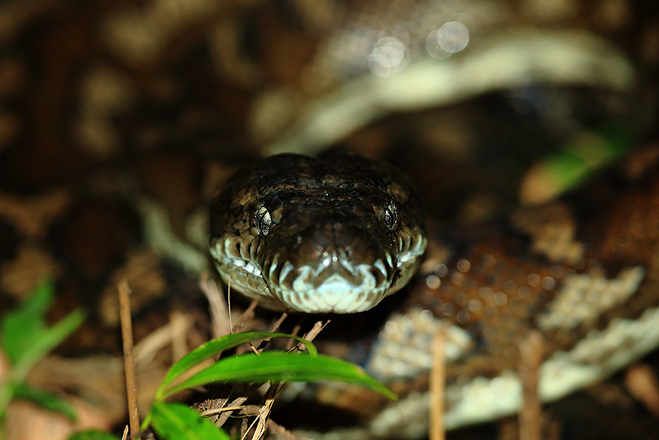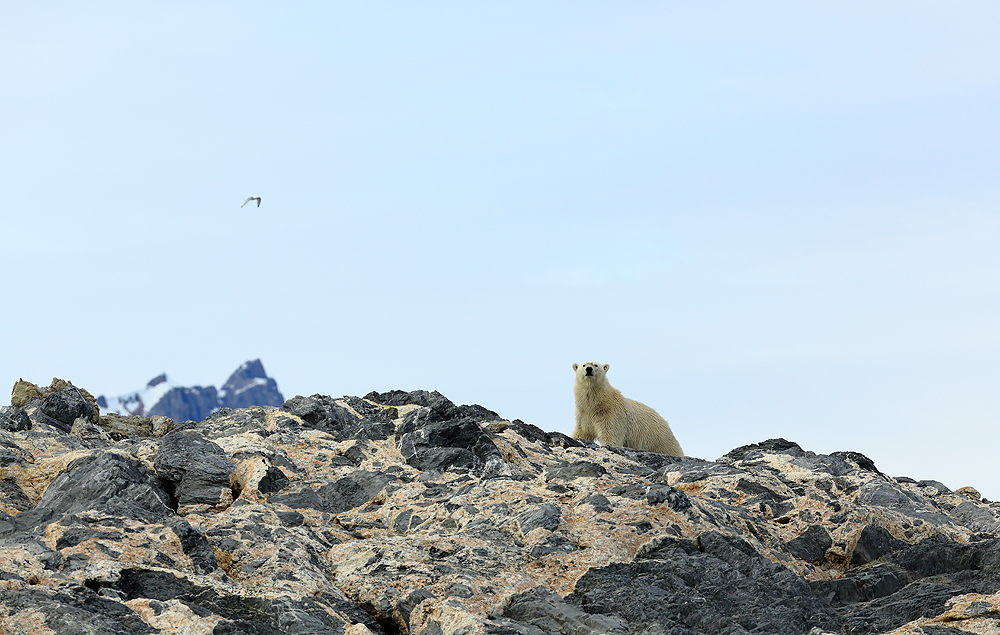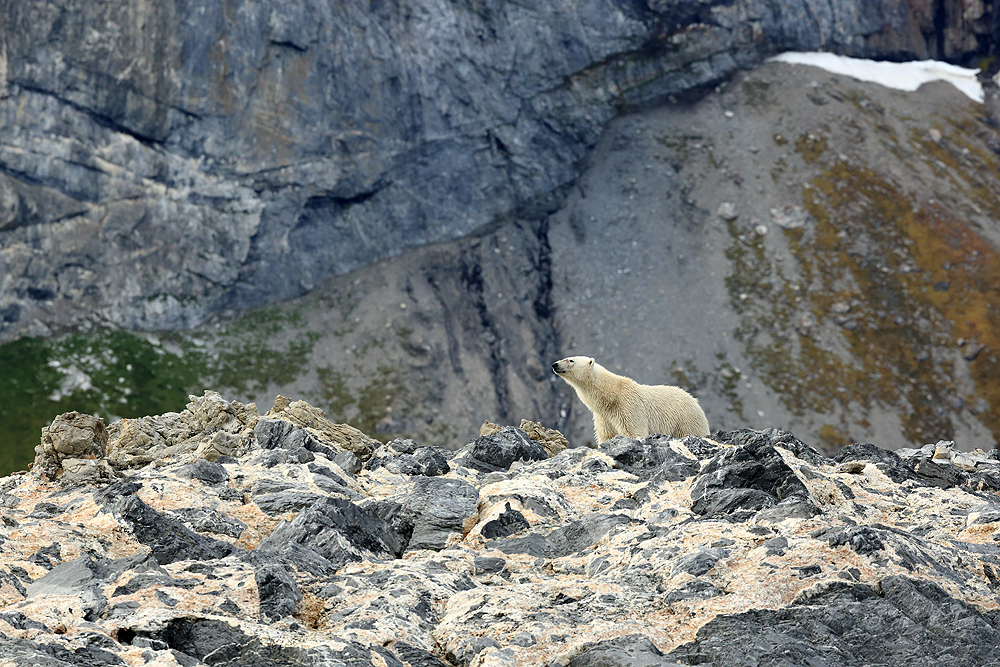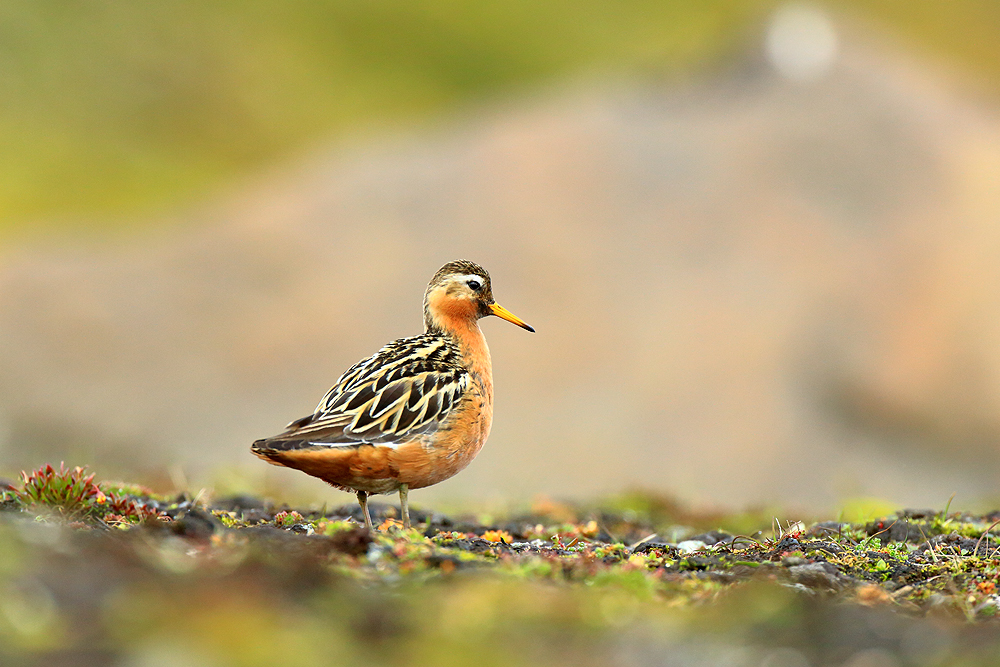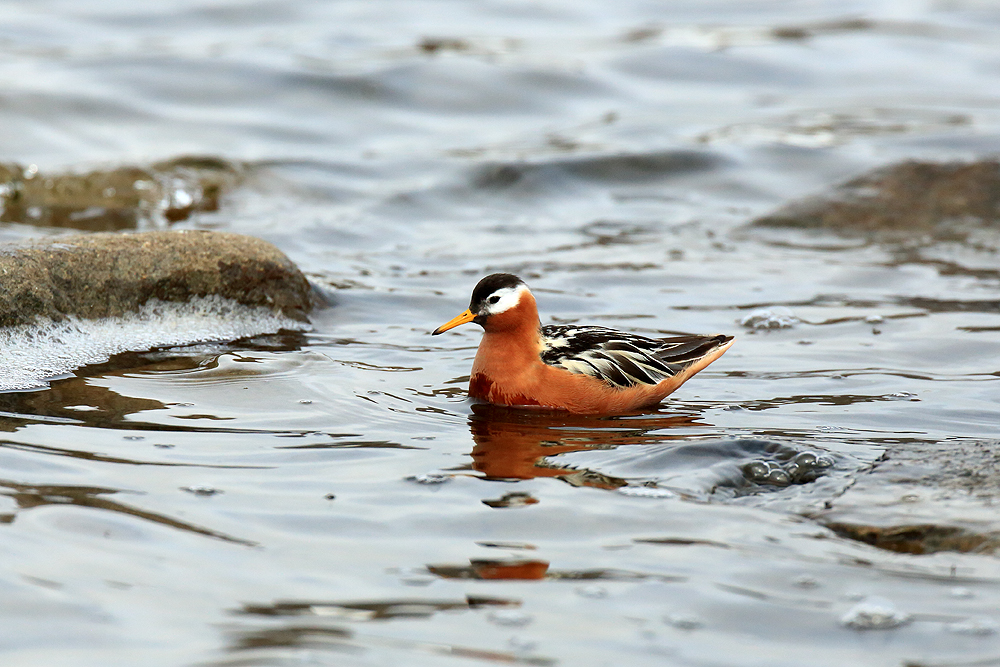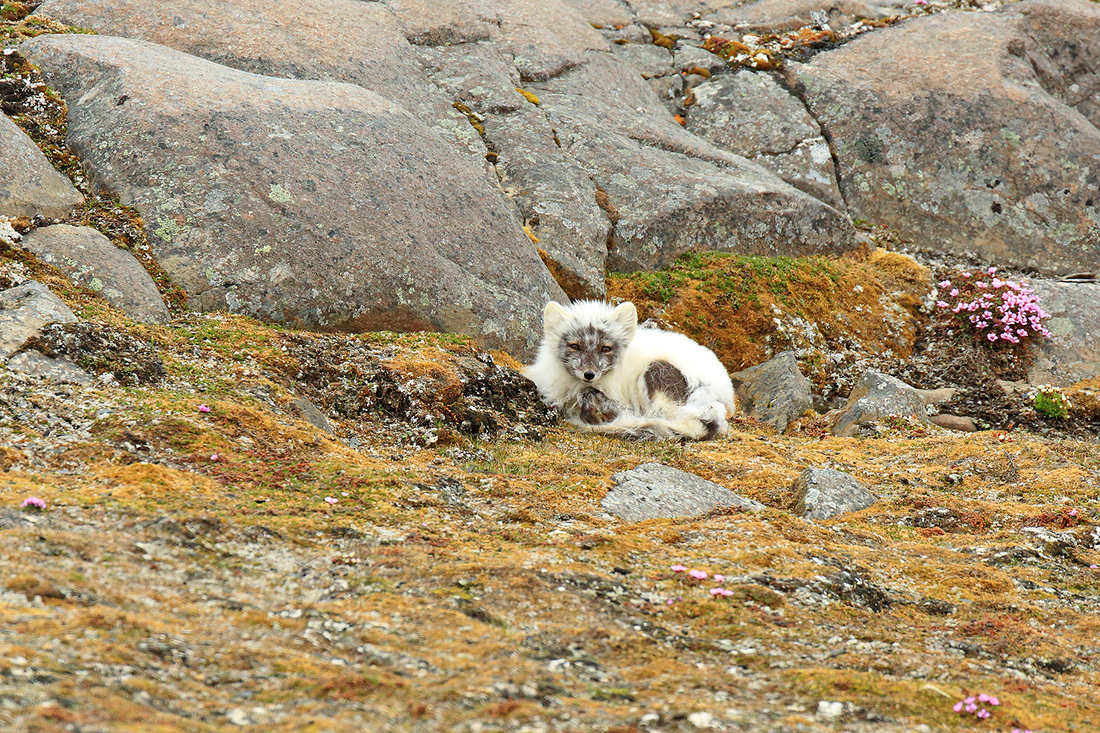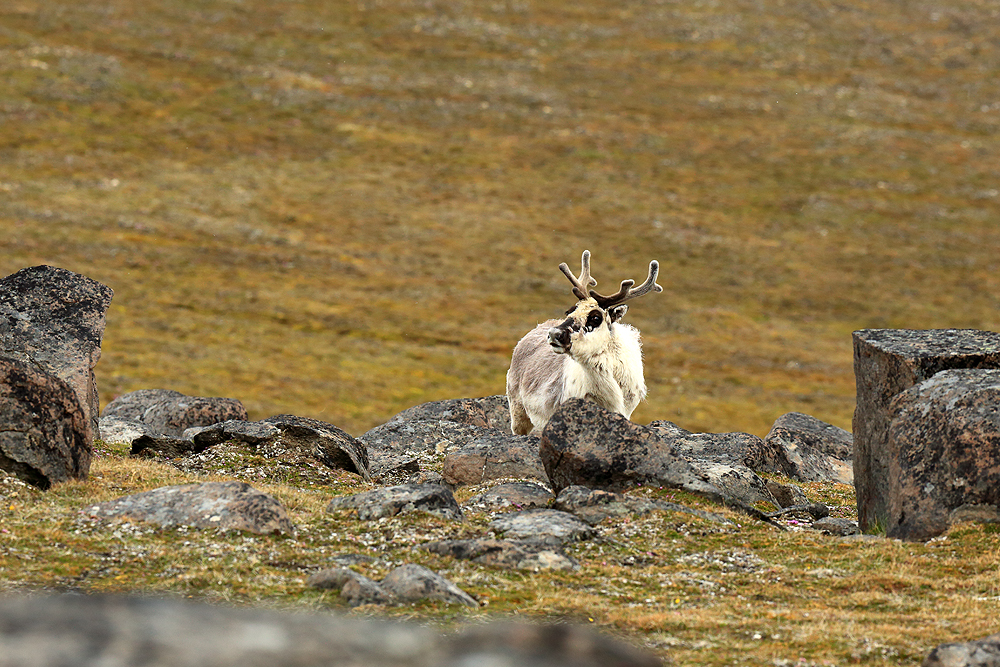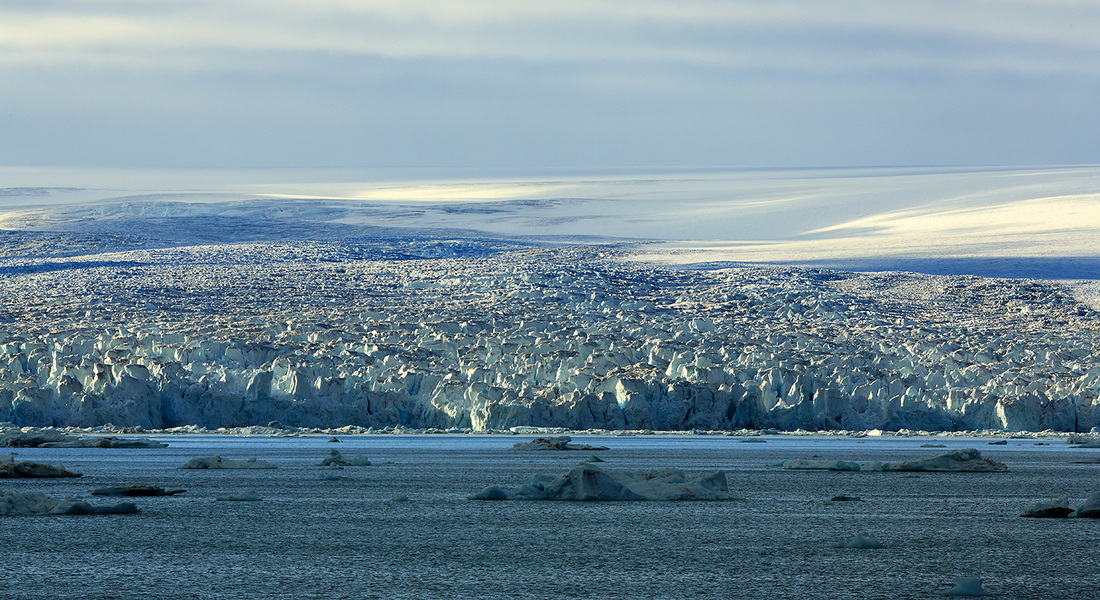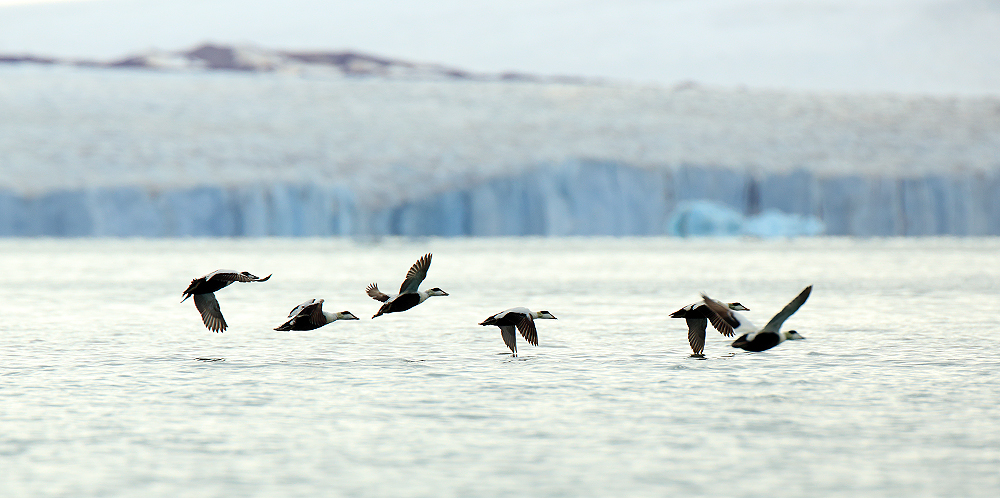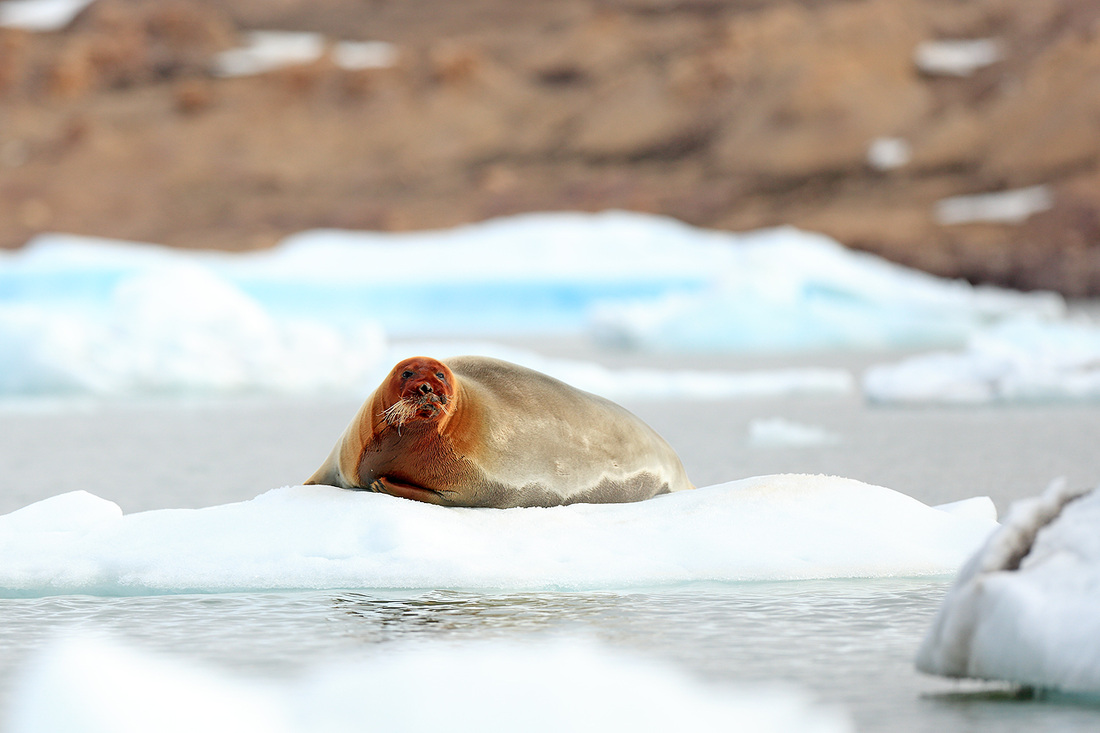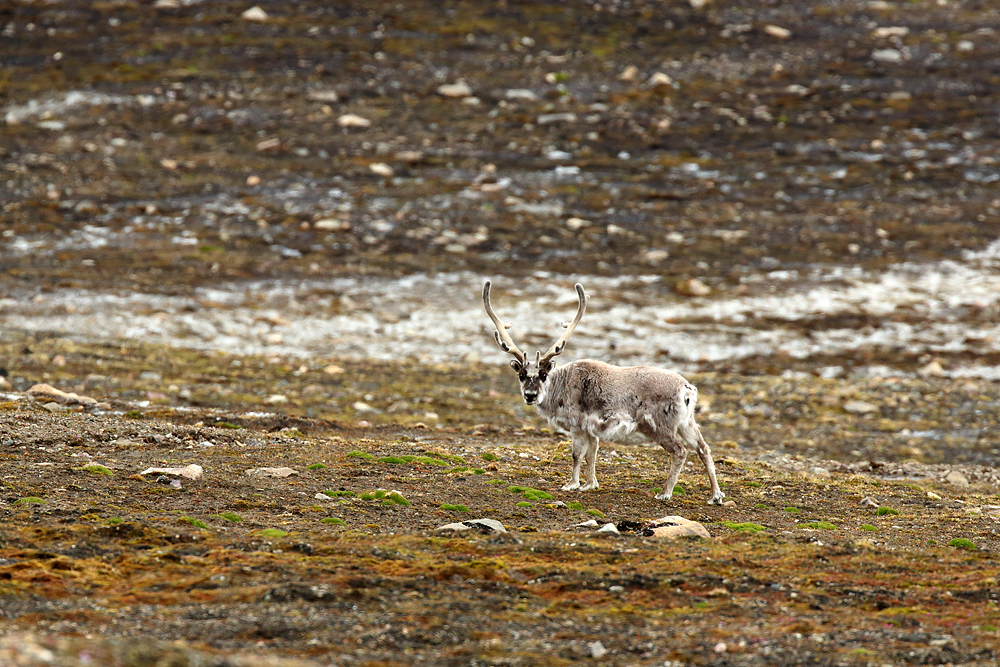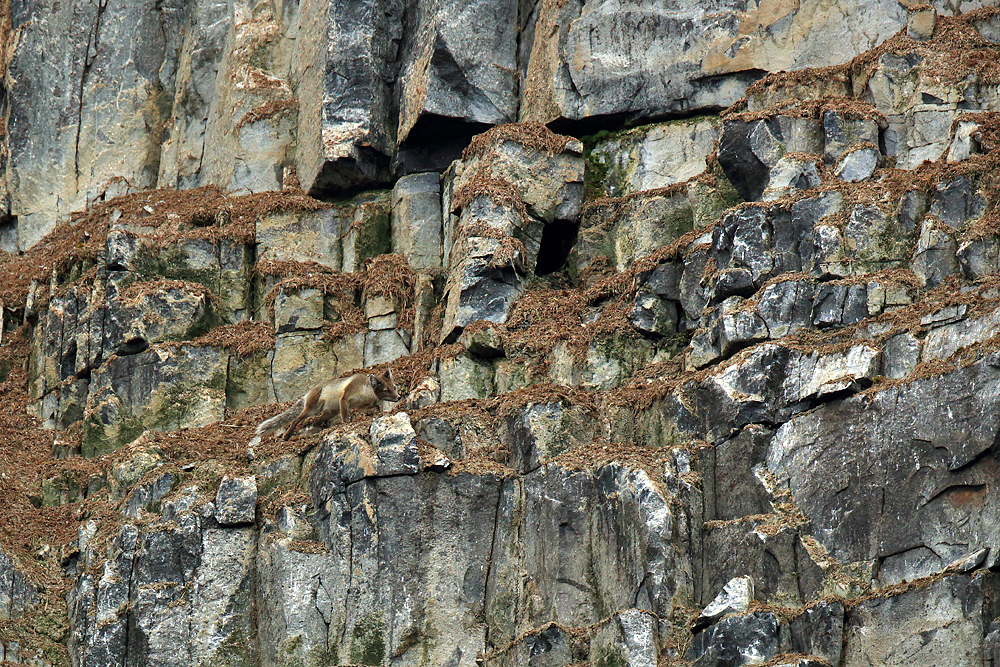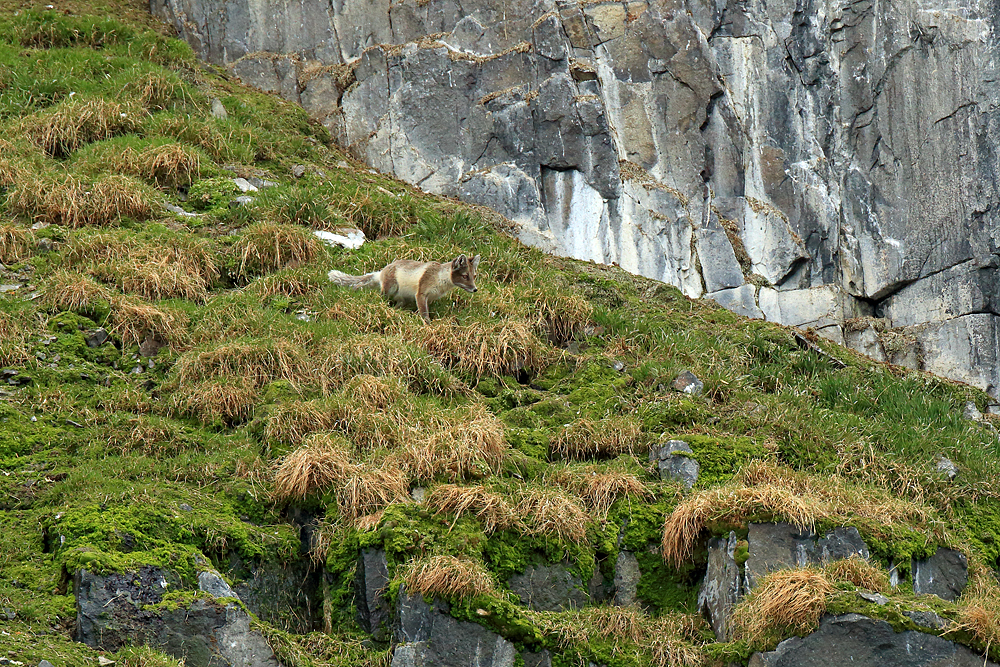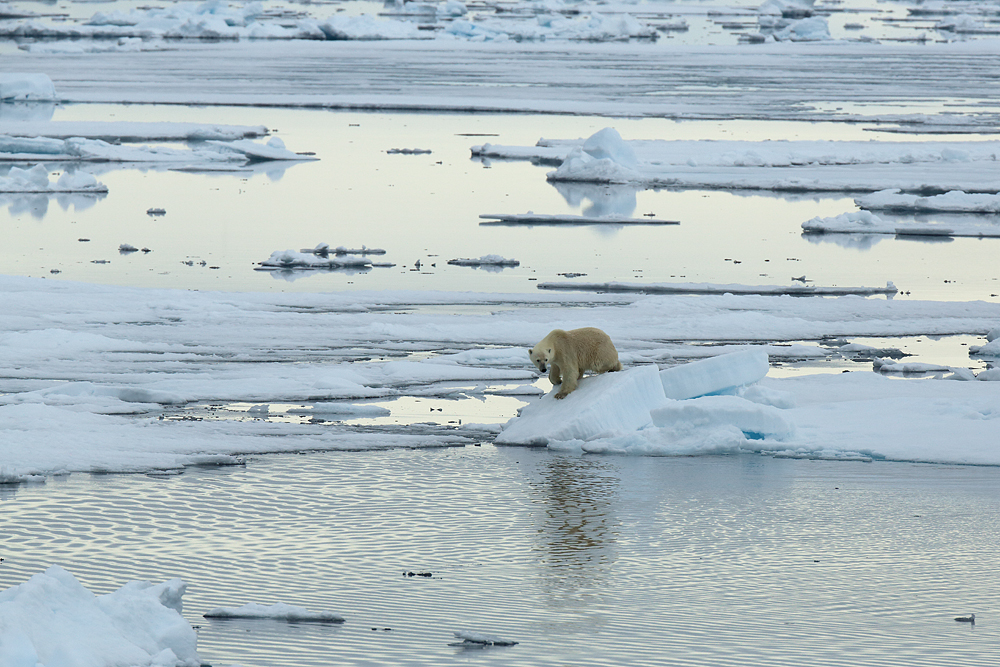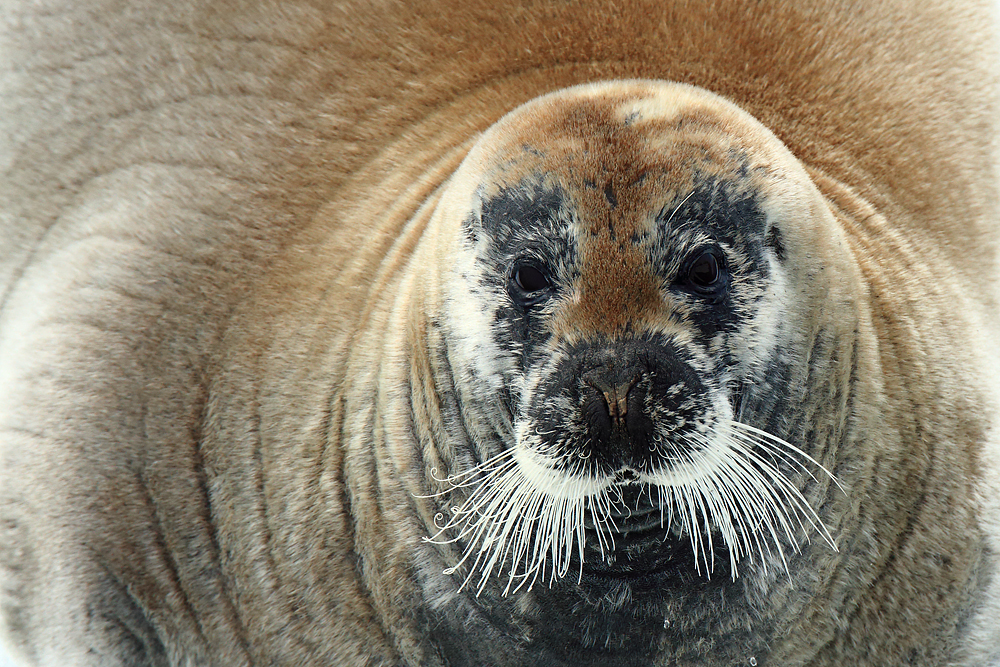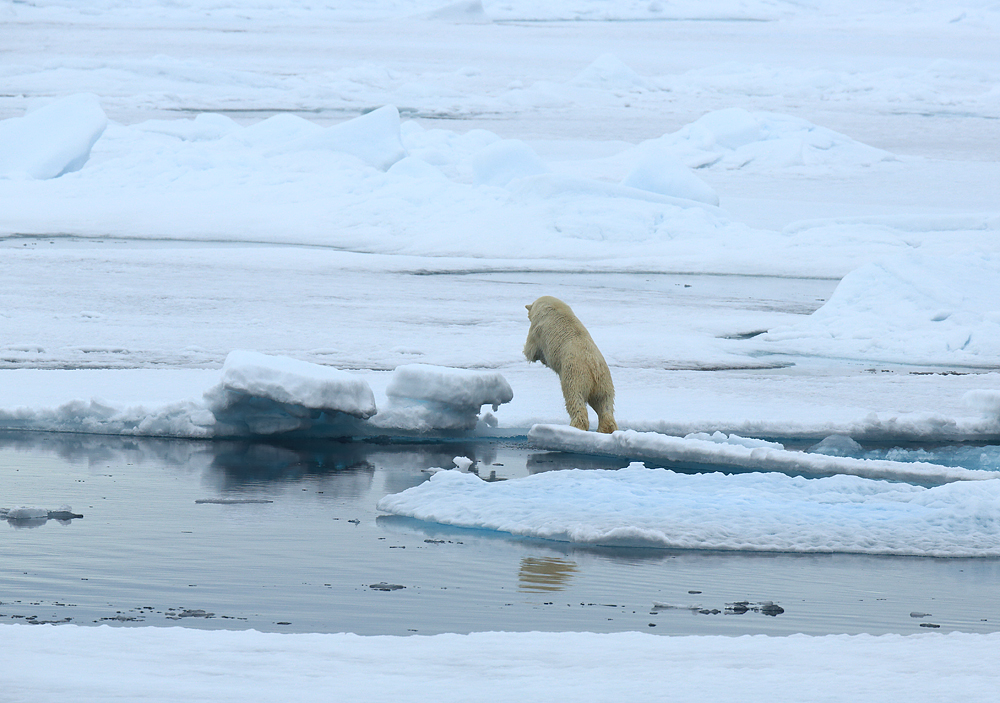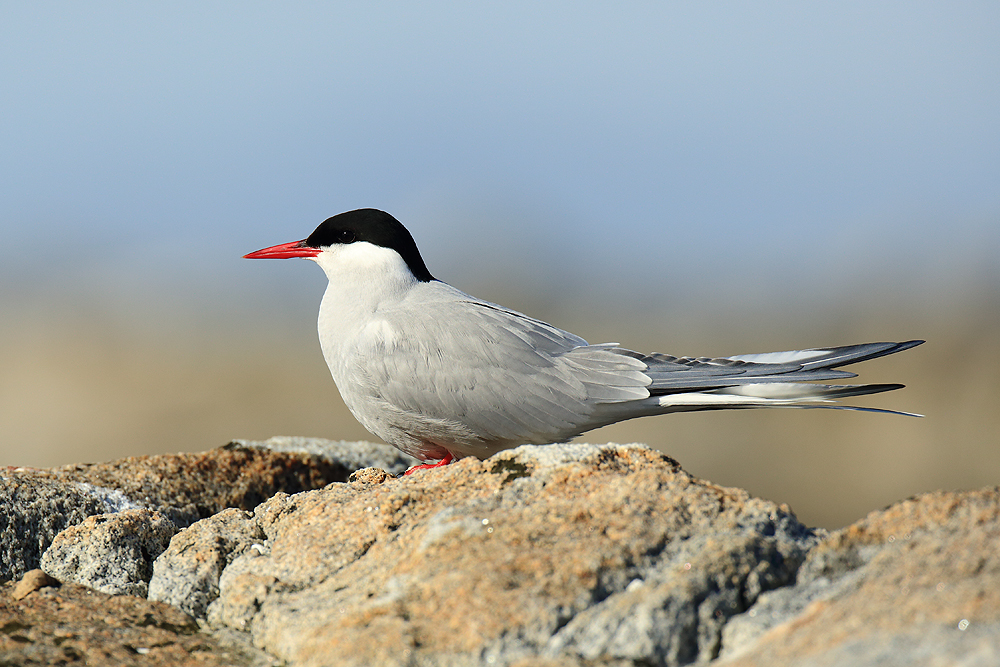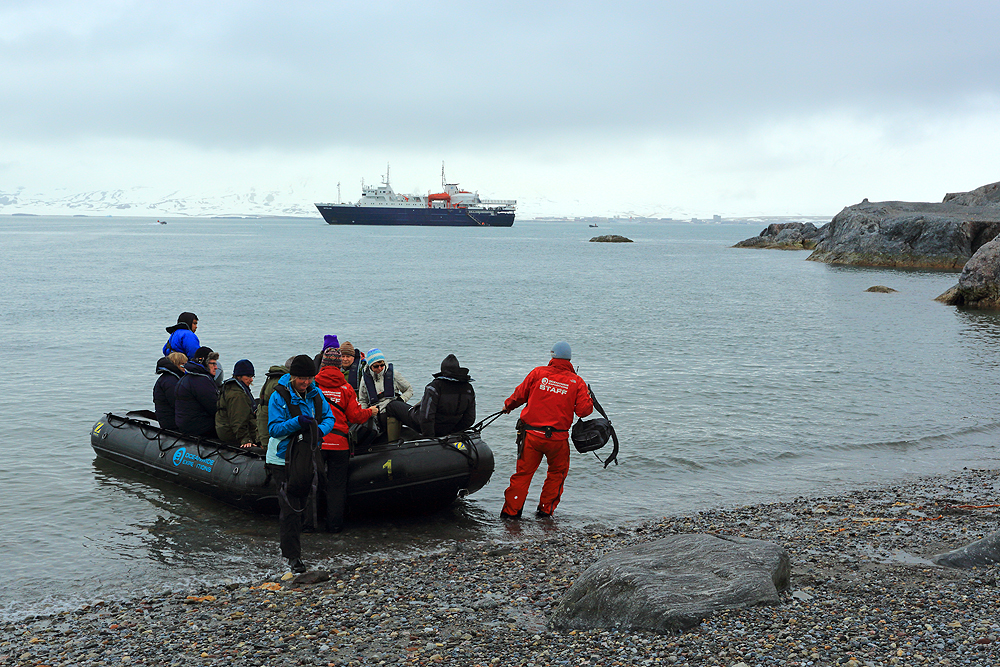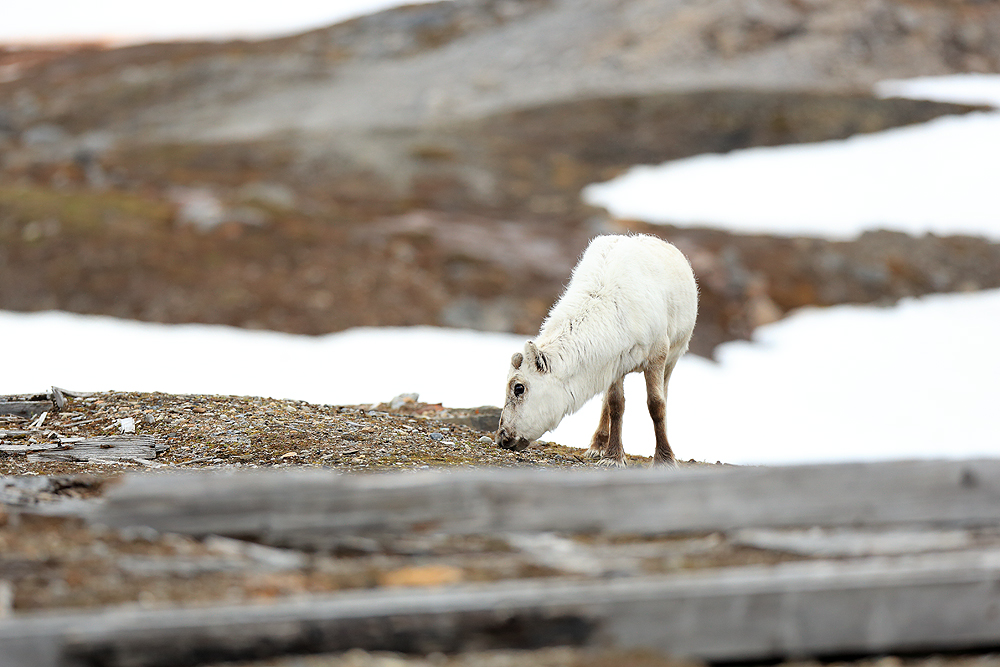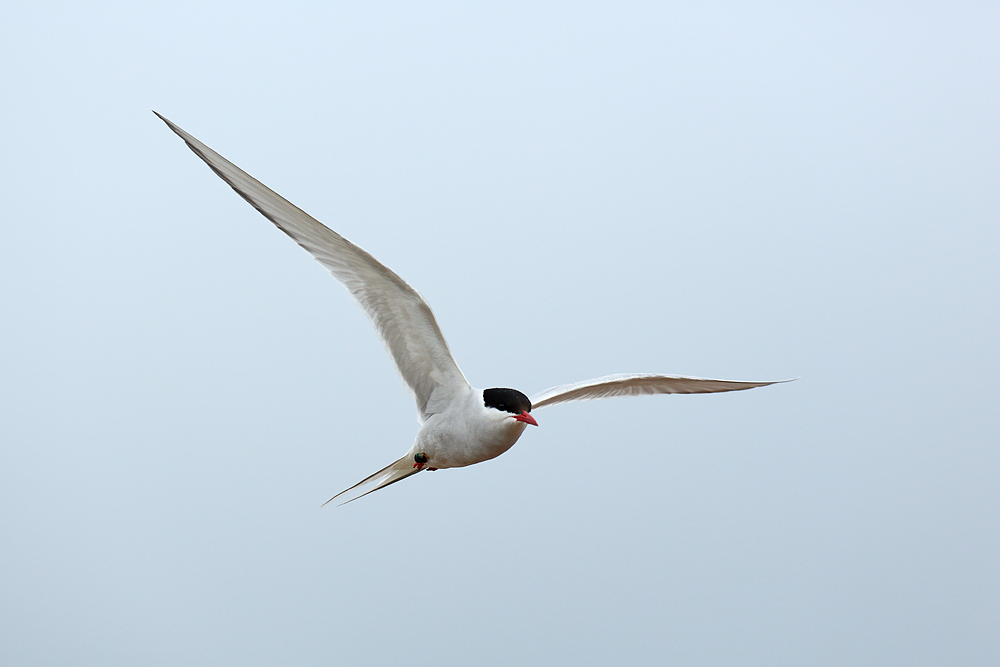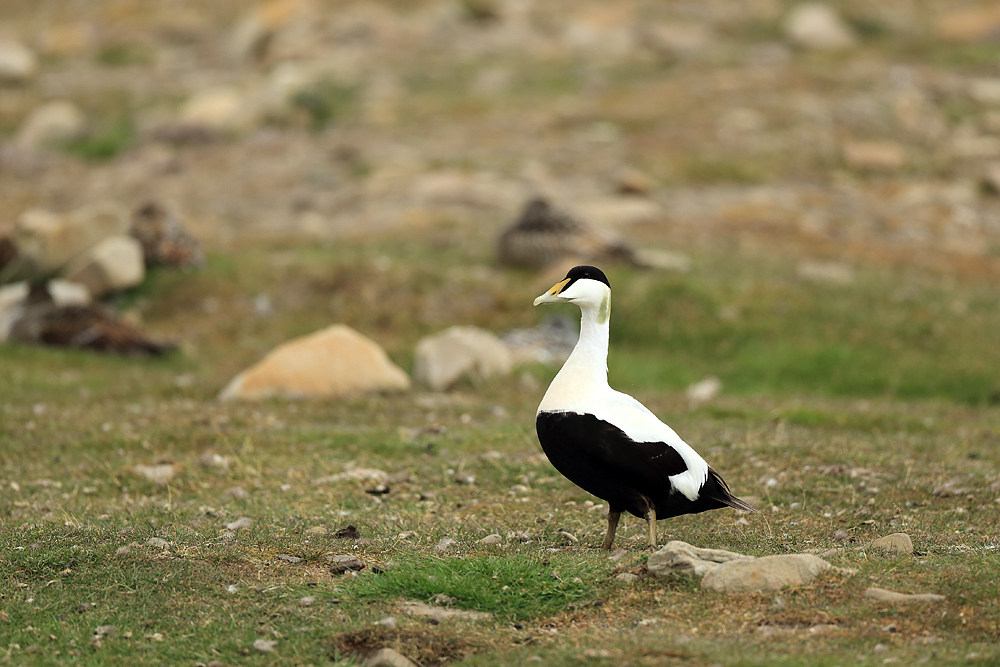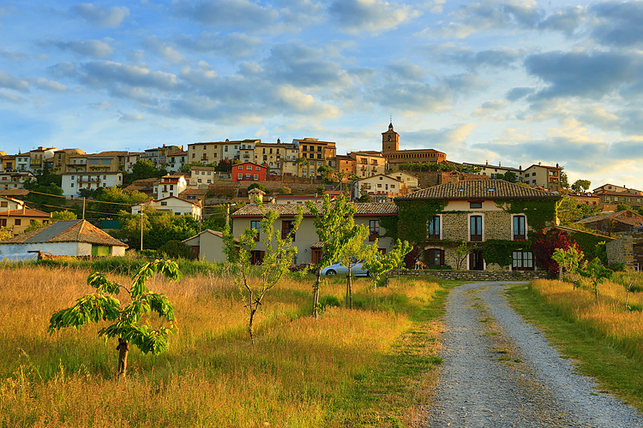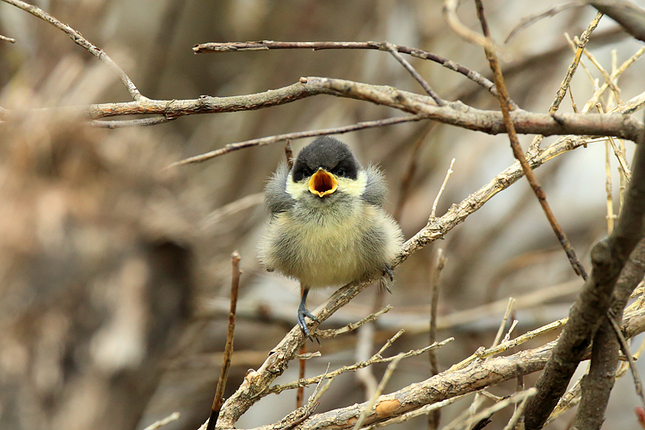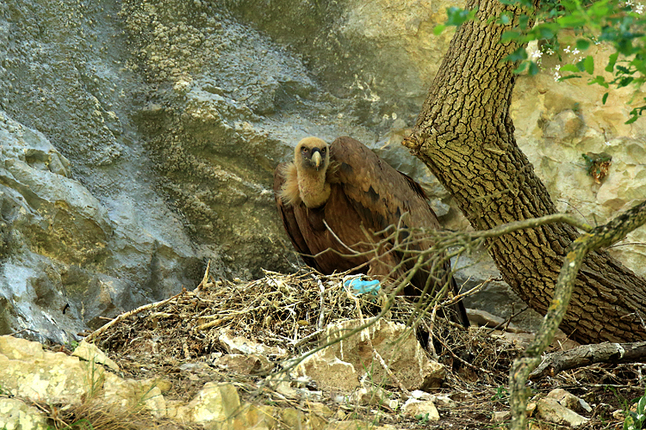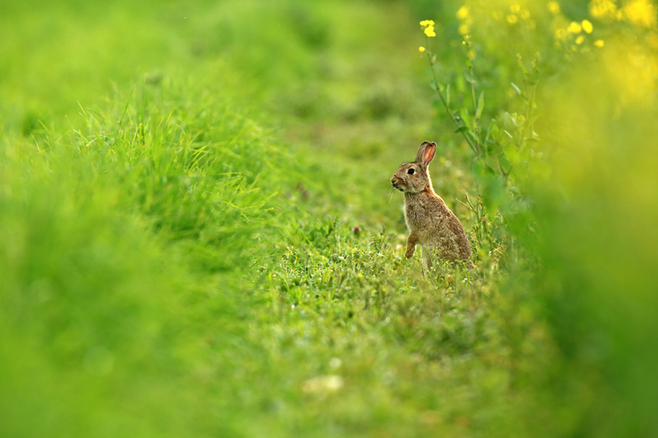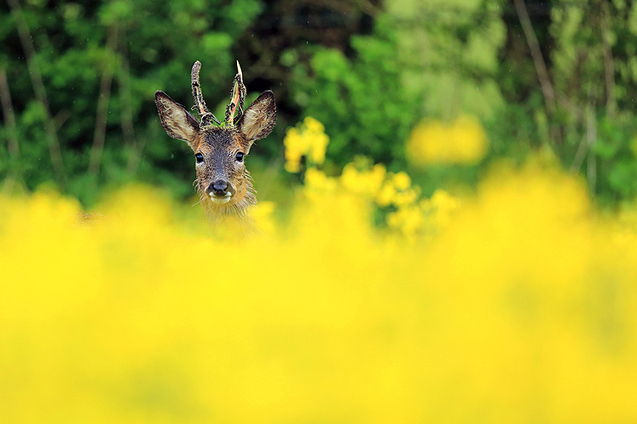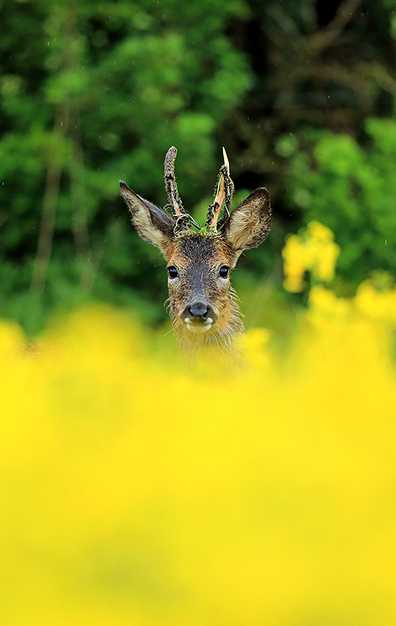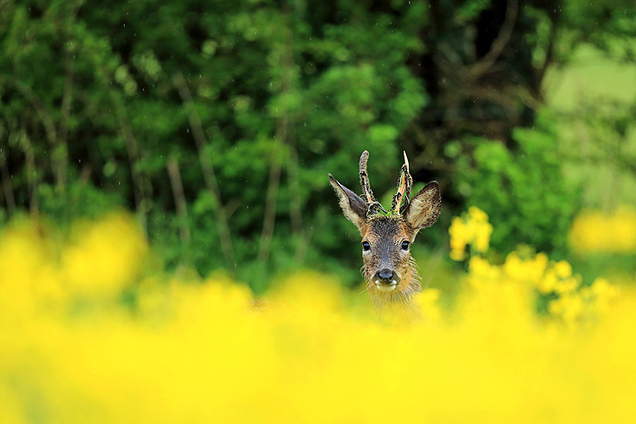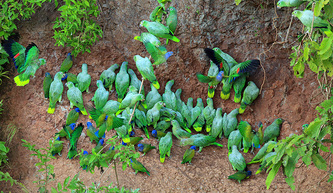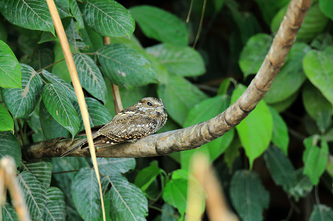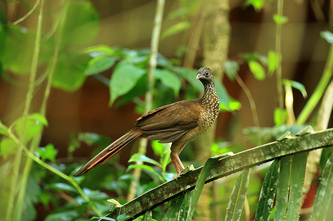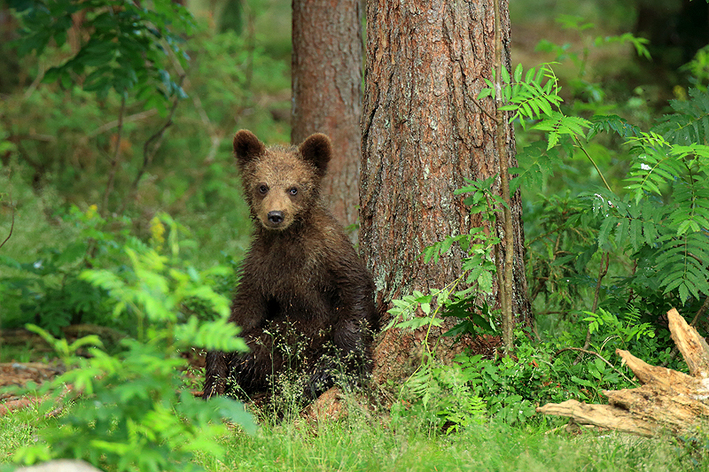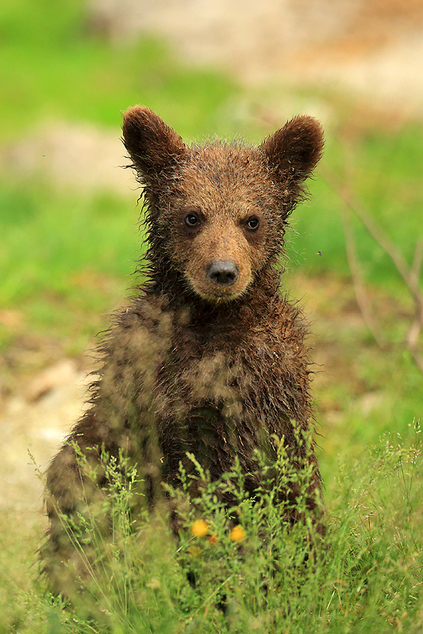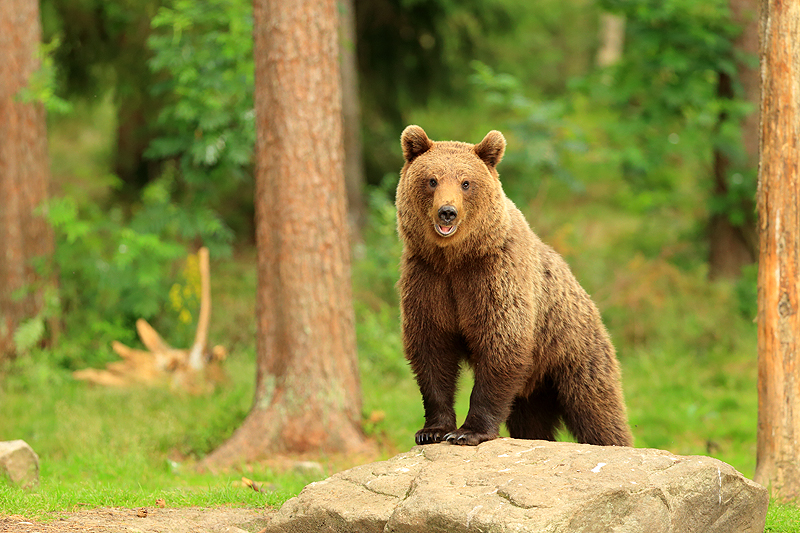|
So for the last couple of weeks we have been based near the popular town of Byron Bay. We are actually up in the hills in the 'hinterland' but the climate is fantastic and there is an amazing amount of life that comes out at night. We are house sitting in the village of Federal and are also looking after a collection of chickens. One of the biggest problems with looking after chickens here is that there are large Carpet Pythons ... only last night I heard next doors chickens sound an alarm but by the time I got there a 2 metre python had already killed one chicken and was trying to kill a second. It was really sad but if we hadn't have got there when we did, then the whole coop could have been lost! It isn't just snakes that inhabit the night, there is also an amazing diversity of invertebrates ... Then there are the amphibians ... That'll do for now but I will post some more within the next week. I will also update the details for the invertebrates so they are all correctly labelled.
0 Comments
Our last full day on our circumnavigation of this remarkable Arctic island was to be a beautiful one. The Sun shone down on us and a mist rolled in across the stunning glacial scenery. The fjord was called Bellsund at it was home to some amazing cultural history as well as the natural history. Below is a stark reminder as to why the islands were colonised in the first place ... sadly the Arctic was a superb hunting ground for whales and other blubber rich mammals. Belugas, the white whales, were killed in their thousands as were the now critically endangered Bowhead. Below you can see the carnage that the Europeans brought to this wild landscape. We also had a fantastic sighting of an Ivory Gull as it flew right past the group as we explored this old whaling outpost. After our morning landing we headed over to Ingeborgfjellet (as we were eating our lunch) and arrived to a beautiful big blue sky. We were hoping to find another colony of Little Auks as well as Reindeer. It was incredibly warm in the sun and I actually stripped down to my t-shirt ... it really was particularly mild. We never managed to get particularly close to the Little Auks but I had an amazing encounter with a small herd of Reindeer. So close I had to get the wide-angled lens out of my bag and make the most of the photographic opportunities. So another amazing day with what the Svalbard Archipelago has to offer. It is so incredibly hard to really do this amazing place justice with photography. The landscapes are utterly awe inspiring, the wildlife is remarkable and the freezing temperatures just help add to the feeling of a true wilderness ... and this really is wilderness, there is no escaping that.
Sadly this was my last full day in the Arctic Circle, the next day the M/V Ortelius docked in Longyearben and we flew back to Oslo, before flying back to Heathrow and heading back to the day job. Sub-Saharan Africa has always been that special place for me and nothing has ever quite compared ... until now! Perhaps, at long last, I have found another wilderness where I feel I could just keep on returning. This morning we awoke to big blue skies and headed into the spectacularly beautiful Hornsund. This massive fjord is surrounded by dramatic mountain peaks and destructive glaciers. Being so far South, I have to admit I really wasn't expecting to see as much of the truly specialist Arctic wildlife. Upon arrival in this stunning setting a female Polar Bear was spotted on the shoreline and then moments later another larger bear was spotted on the far shore (perhaps a male). We would be going on a Zodiac cruise to see if we could get any closer to the bears and then on to explore the fjord ... little did we know what was in store for us all. We all met on the deck and waited to board our Zodiacs for our afternoon cruise, I was with the Naturetrek leader Peter Dunn and expedition leader Jan Belgers. We set off as one of the lead boats and headed toward the small headland where we had earlier sighted the female bear. As we approached the shore line we realised that the bear had moved on and as much as we were scanning both the water and the shore we were unable to see anything. Peter then spotted some movement on the water's surface way out in the fjord ... it was the bear, it had managed to slip by us in the ice-cold water. The bear approached an island and we all held our breaths as we prayed the bear would be a 'quality' bear. It was definitely a 'quality' bear ... The real benefit of the island was that the bear felt completely at ease and we could travel all the way round for a constantly changing backdrop. As a photographer you always want to try and capture that image that stands out and lingers in the mind, this really was the perfect photographic opportunity. Even then this was one of those moments where you just have to put the camera down and really take in the moment! We slowly moved around the island the backdrop was more than you could ever have dreamt of. We slowly moved closer and closer, all the time keeping an eye on the bear to make sure it was completely at ease. We all go the odd glance and a quick sniff but it certainly wasn't affecting its scavenging behaviour. The bear was obviously search for whatever food it could find, it is known that a variety of birds breed on this island in the summer months. After a wonderful hour with this remarkable Polar Bear we thought it would be best to leave it in peace and leave it to carry on with its search for food. With a few months remaining until the sea ice returns this bear will really have to try and conserve its energy and find whatever scraps that are available. We move further up the fjord to see whether we could approach the second bear, he was a huge male but he was not at ll interested in us and remained in his slumber. We carried on towards the head of a glacier to explore the amazing landscapes and the ice-filled water. I really hope you have enjoyed looking through all of these images and with only one more post left, I think that this is perhaps the highlight of the cruise. This day was quite possibly the most memorable of my life outside of my time in Africa, with jaw-dropping landscapes, danger and unbeatable wildlife encounters I am not sure what can beat it.
Coming up are some charismatic reindeer and a few more landscapes so please keep on reading. Our planned landing site for this morning was Kapp Waldburg, a site for nesting Kittiwakes in a steep sided canyon. As we arrived at our landing point we heard over the loud speaker that there was a Polar Bear and we would have to head elsewhere to stretch our legs. From there we headed on towards the tundra habitat at Sundneset, once again as we approached the landing site the Polar Bear call went out again. This bear was very relaxed and the expedition team decided it would be safe to land slightly further down the coast and have the ship keep an eye on the bear's where abouts. As we landed we were greeted by a truly wonderful site, a stunning pair of Grey (or Red) Phalaropes were feeding only yards away from us. The male was particularly obliging, carrying on with its feeding as if we didn't even exist, the female on the other hand seemed to be rather skittish and wasn't a particularly good poser. Unusually for the bird world the female Grey Phalarope is actually the more beautiful. The males take care of the eggs and ensure they hatch before raising the chicks, the female visits a multitude of males and lays her eggs with a few of them ensuring that they have the best chance of survival. As we left the two phalarope to their own devices we headed inland across the tundra and had an unexpected but truly wonderful encounter. A very shaggy Arctic Fox was heading towards us and we were blessed with extraordinarily close views. The fox had not yet lost all of its winter coat and spent a bit of time rolling around doing its best to free itself from its Arctic jumper. There were also a few Svalbard Reindeer within the vicinity but they were all a little nervous around us. After spending a couple of hours on shore and aware that there was still a Polar Bear within the vicinity it was time to head back down to the Zodiacs and transfer back to the Ortelius. As we reached the landing site we realised that the male Grey Phalarope was still feeding and happy to pose for the photographers in the group. After another incredible lunch we set sail for Dolerittneset, the ship anchored and we were once again out on the Zodiacs heading for shore. I joined the hiking group and we climbed up into the misty hills that towered above the water. We really didn't see much except for a few reindeer and a couple of ptarmigan and even Stein (our Norwegian guide) seemed to find the climb hard work. I am sure on another day the views could have been superb but on this day the visibility was less then 20 metres.
We eventually headed back down towards the ship and had a look at the multitude of Walrus bones that littered the shoreline. This was once a great Walrus haulout but unfortunately they were nearly hunted to extinction in this area. There were a couple of individuals on the shore but no longer were there the numbers that once thrived here. Once we were back aboard the ship, we headed for the southern most tip of Spitsbergen and up towards the stunning fjord of Hornsund. This took us all night and most of the next morning but what was in store in Hornsund was something none of us ever expected, it was a day that will stay with me until the day I die ... keep reading to find out what Hornsund had in store. This day didn’t start after a good night’s sleep … instead, we stayed up until midnight to welcome the midnight sun, the first time we had seen it on our voyage. I had to get a photo of me on the ship’s uppermost deck so sorry about the image below! What made this moment all the more special is that we were in Wahlenbergfjorden, this 50km long fjord is rarely visited and the depths are as yet completely uncharted. This really was an expedition voyage and we only found out, upon our return, that the advanced sonar had been damaged earlier on in the trip … we were sailing relatively blind following a previous expedition’s navigation. There was also a Polar Bear on a piece of fast ice (ice that is attached to the shore) and it was obviously hunting seals but eventually it was so small that we called it a night and headed off to finally get some sleep. The next morning the weather was a lovely 5 degrees Celsius with the sun still shining down upon us. It was a morning for a Zodiac cruise and in the night the Polar Bear had come past the ship to another piece of fast ice and was obviously hunting seals. We approached this ice, the Zodiac drivers beached the front of the boats on the ice but the bear was still at quite a distance. We decided to turn our attentions to the magnificent bird life that seemed to be all around us. There were Arctic Terns, Grey (Red in America) Phalaropes, Common Eider, King Eider, Long-tailed Ducks, Glaucous Gulls and a Ruddy Turnstone that I just could not photograph! It was an amazing place but not the easiest to photograph in. We headed off to one of the many glaciers that flowed down into the fjord from the huge ice sheet and a seal was spotted on a small ice floe. This was another huge Bearded Seal, this time with a very red head due to the iron ore deposits that stain the sea bed. As the seal feeds and searches in the sediment at the fjord’s bottom, it manages to stain its fur with this intense natural dye. The next half an hour or so was an amazing close encounter with this large marine mammal and it was only when we got within a few metres that we realised this individual had been through the wars. Its face, as you can see, was terribly scarred as were it sides. It seemed a Polar Bear had once tried to catch this seal but had failed, forever leaving its mark upon its intended prey. We left the seal alone and made our way through the mass of ice that had calved from the glacier, before heading back to the Ortelius for a spot of lunch. This was truly a wild and remote place, with amazing scenery and fabulous wildlife one could not really have asked for more. As we cruised out of this stunning fjord we were greeted by the amazing sight of three individual Humpbacks feeding, at times only 25 metres from the ship. After about an hour with these huge cetaceans we had to continue onwards towards Torellneset, where we would hopefully find a Walrus haul-out. We had an early dinner before heading out onto the Zodiacs and landing on the shingle bank at Torellneset. There we were, on a remote beach in the High Arctic with a large group of Walrus … a truly remarkable experience. We were photographing these blubber behemoths on the beach when our guide Mick waded into the water and started to ‘tap dance’. What happened next was amazing ... There were already Walrus in the water and Mick's little dance routine (he was really just paddling) seemed to create enough noise to lure in the curious Walrus. They don't really have any natural predators and are curious about things that are in their territory. It was amazing just how close these amazing mammals came and it made for some stunning photographic opportunities. At times, they were so close that I was unable to take any photos ... I just had to sit, watch and enjoy the moment (I can cope with that). After some extreme close ups of these inquisitive Walrus they backed off a bit and there was even a bit of a scuffle between two individuals. One seemed to have a bit of an itch and started to roll on the rough beach to ease its discomfort. Our guide Mick was still standing in the shallow water watching intently. What an incredible day it was, it can be so easy to go overboard with superlatives when visiting somewhere like Svalbard but it is the only way one can describe this remarkable destination (you see I just can't help it). The days can be long in the Arctic, this was certainly one of those days but you could never say that it dragged. It was action-packed and the sheer variety on offer was astounding (there's another one!). After a day like today, you wonder what on earth could be in store tomorrow and how could it possibly compete with a day like this? The next day was going to be a little different but still great for photography ...
Having had two Polar Bear sightings in as many days the morale was high among the group but sadly our planned excursion to find the Walrus haulout was a no go. It seemed that nobody was at home and so we moved on to the fhord at Faksevagen. Here we went off on our first proper walk to explore the Arctic Tundra. We set off with our Norwegian guide Stein and headed up the hillside into the slight mist. Stein was completely relaxed and didn't seem at all worried by the possibility of any bears. We spotted a few Reindeer here and there but they all seemed to keep their distance from us, suddenly we had company ... a Purple Sandpiper. The bird blended in superbly well with the tundra and you can see why they breed in this terrain. Then at long last the Reindeer came close enough for me to get a few shots, including the lovely male below which had a great set of antlers. As we walked along the edge of a shallow ridge line we suddenly saw a white animal appear within only a few yards of us. Your reaction says Polar Bear but luckily it was only another Reindeer, and luckily for me he posed nicely for a few photographs too. At the top of the ridge we had a sighting of the ship surrounded by an ice floe that had been at least half a kilometre away when we landed. It just goes to show how quickly the environment can change in this amazing landscape. We headed back to the ship for yet another filling lunch before we headed to the amazing breeding colony of Brunnich's Guillemots at Alkefjellet. We were told to dress warmly as we were going to be on the Zodiacs for at least a couple of hours and possibly more depending on the quality of the sightings. We went out onto the water in our Zodiacs and I had our Austrian guide Barbara (an expert on Glaciers). We made our way slowly towards the cliffs and at first there were just a few hundred birds on the tiny rocky outcrops, where each bird was incubating a solitary egg. However, as we made our way further along the cliffs, away from the ship the sky seemed to be filled with birds. The cliffs were towering above us, stained a mix of white and pink from the guillemots' droppings, and the birds were there in their thousands. The noise was quite amazing and it was an incredible spectacle which I feel truly honoured to have seen. We were desperate to see our first Arctic Fox at Alkefjellet and when we came to a grass covered scree slopes it was the best chance we would have. We scanned and we scanned but we just couldn't see any movement ... then Barbara spotted one, our first Arctic Fox. She was so excited and we were too, it was a long way off but it was an amazing sighting. We eventually decided to leave the fox alone and head back to the ship for the evening and yet another meal. Tonight we were heading to a fjord that has only be visited by a handful of vessels, even our expedition leader had never been there before. We were now really on a true Arctic expedition and heading into the unknown.
Having spent the night in the ice, all was clear on the Polar Bear front but we weren't to be put off. Today we were going to head through the ice and see if we could find some more bears. After breakfast we were to have a lecture about how to sex Polar Bears, as the lecture was coming to an end a call went out over the loud speaker ... a Polar Bear was on the horizon. We made our way towards the bear and this bear seemed more relaxed in our presence but as we approached a group of Harp Seal swam around the ship's bow. It was amazing to get closer to this bear and see it behave as if we weren't even there ... After 45 minutes or so we decided to leave the bear in peace as we didn't want to break the ice and destroy its potential hunting habitat. We set off through one of the many clear channels in the ice and headed east along the coast of northern Spitsbergen. As we made our way through the ice we disturbed the water and were therefor accompanied by Fulmars, Kittiwakes and Glaucous Gulls. I went to the stern of the ship and photographed these birds as they performed their aerobatics. As we kept on heading through the ice to the remote island of Moffen we noticed a large lump on the ice, it was a Walrus ... our first of the trip! As we got closer, much to our dismay, the Walrus slipped off into the icy water and out of sight. We were all a little disappointed but then to our delight we noticed a multiple of lumps, yet more Walruses. It was a bachelor group of Walrus, sitting on a small ice floe and creating quite a mess in the process. The ice was less than pristine but the Walruses certainly seemed content as the captain swung the ship to try and make sure everyone on board got a great view. So with Walrus finally ticked off and some close relatively close encounters from the lowest point on the ship we headed off towards one of the fjords where we hoped to land the following morning. The target ... yet more Walruses but this time at a well known haul-out point.
Having had an action-packed day in the High Arctic does not necessarily mean that the day is done and bed is soon to follow. With 24 hour daylight a wildlife sighting could happen at any time and the camera always needs to be kept close by (in my case it went pretty much everywhere with me except to the dining room). Today was definitely a day when the wildlife watching didn't stop after dinner, in fact were above 80 degrees North and we were in the pack ice. The excitement of being surrounded by ice had led many of the group to head out on deck and to the bow of the ship and start to scan the horizon for the mammal everyone had come to see ... the Polar Bear. As we were often reminded anywhere in Spitsbergen could be the temporary home of a Polar Bear, even in the far South of the Island. The weather had gone on the gloomy side again after a glorious few hours of Arctic sun but we were not deterred and we were all scanning. In the mist we noticed a large 'blob' on a small piece of ice, it was so large in fact that for a while we thought there must have been more than one mammalian being in this 'blob'. As we got closer and the mist cleared a little we realised that this was in fact just one large piece of blubber. It was an incredibly obliging Bearded Seal, you would not believe that animal would allow a large ice-breaking vessel to steam right up towards it, only metres away, but it did just that! So having spent a good 20 minutes with the seal we decided that it should be left alone, having an ice-strengthened ship is probably not a seal's favoured company. The ship carried on through the ice field, trying to avoid the worst of the ice by using the natural channels that form due to the currents and tides. As we continued onwards into the night there were more than 30 people on the ships bow continually scanning and enjoying the evening light when suddenly there was a shout ... "Bear, Polar Bear!". And sure enough, on the horizon, due North, there was a cream coloured lump among what seemed a sea of ice. The crew turned the ship straight towards the bear and the excitement and buzz that everyone was feeling was very apparent. The slight tension (only slight) that was felt before had evaporated and everyone was there with a smile on their face. As we approached the bear we noticed that it was watching a seal on the ice and was slowly making its way towards the black blob (there were a lot of blobs on the voyage). We spent what seemed an eternity trying to get closer to the bear, with success, but it soon became clear that this bear did not want company and we eventually decided to call it a night. As the Polar Bear off towards the icy horizon we were told that the ship would be spending the night in the ice and that we would set sail again in the morning. With our first sighting of this truly stunning mammal it was time to head to bed and hope that tomorrow would bring us further sightings. After all, we had now all been bitten by the Polar Bear bug.
Today we awoke to some truly stunning scenery to the East and a shroud of mist to the West, the next land stop ... Greenland. We were working our way North to the High Arctic and aiming to visit a Little Auk colony (something I have always wanted to do). These little birds are superbly charismatic and fly in flocks of a few hundred to a few thousand, the colony easily numbered over 50,000 and it was absolutely breathtaking. We arrived on shore, after another short Zodiac transfer, before arriving to the superb guides who were already checking out for Polar Bears. We were greeted by a pair of Arctic Skuas before the numbers of the group grew too big and eventually they flew off to the refuge of the rocky cliffs. We then slowly made away across the rocky scree slope towards the little Auks and the next couple of hours went so so quickly. I could have stayed all day long and photographed these wonderful birds but before I was even settled it was time to head back to the ship. Having packed some of the camera gear away I looked at my watch and realised a couple of hours had passed, it seemed like not time at all. This afternoon there was to be no landing, instead we were to go on a Zodiac cruise from the Ortelius towards a glacier edge. As we boarded the Zodiacs the sun came out, the mist started to clear and we were soon surrounded by an intense blue with the white snowfields and snow-capped mountains. As we started to make our way down this beautiful Arctic fjord we spotted a distant rock moving, as rocks obviously don't move we knew that we must have a seal ... we certainly did, our first Harbour Seal (Common Seal). We daren't approach too closely in case we scared it off so we made sure we left it alone after capturing a few record shorts. The ice in the fjord, which had broken off from the glacier, littered the water and the Zodiac was forced to weave in and out to avoid the larger pieces. We then came across a posing Black Guillemot silhouetted upon the top of small piece of ice as well as a swimming and rather wary of us. The landscapes were just absolutely stunning and I really hope some of the images do it at least a little justice. We also came across an individual Arctic Tern sunning itself in the warm afternoon sun. The Arctic, at this time of year, has 24 hours worth of daylight and that means the wildlife watching doesn't stop after dinner, in fact sometimes the best sightings are when you are getting ready for bed. This was just the first half of our day with plenty more to come ...
With our first night at sea, we were up bright and early for the first of many amazing breakfasts before a briefing on our first Zodiac excursion. This morning we were visiting an area where a historic British marble quarry once operated but is now favoured by Svalbard Reindeer and Long-tailed Skua. This was our first landing and so it was our first time venturing into Polar Bear territory. In fact, it turns out that anywhere on land is bear country as is anywhere at sea! We quickly spotted our first Svalbard Reindeer and we managed to get a few photographs in the gloom of the morning. As we walked across the tundra for the first time we saw plenty of Snow Bunting, our first Red-throated Diver, Long-tailed Duck, Purple Sandpiper, Brent Geese and the stunning Long-tailed Skua! We had a great introduction to the Arctic ecosystem in the morning with our visit to Ny London before having a superb lunch (in fact all the food throughout the trip was just "fantastic"). In the afternoon we would be visiting the northerly town of Ny Alesund where there are breeding Arctic Tern and sometimes some Arctic Foxes, the small settlement is primarily a research centre having originally been built for a coal mine but it is also home to the world's most northerly post office! It was the wildlife that was to feature and we had another yet another Zodiac transfer to the small dock and we were then free to wander (with a perimeter of armed guards around the settlement). A great day all round and a really educational first full day in the Arctic. We knew that tomorrow would be our first day in the "High Arctic" and we were all very excited indeed. Another night's worth of cruising and we would start to be in a really wild landscape!
Where do I begin ... well let's say that I was very lucky to be offered a place on Naturetrek's Spitsbergen cruise, with the staff discount, with only a couple of weeks notice. Of course I jumped at the chance and flew out to Oslo before heading to the Arctic Circle, I could not believe it was all happening. Anyway upon arrival on the island of Spitsbergen, in the charismatic and rather cold town of Longyearbyen, we awaited to board our ship an so I headed off with my colleague Simon to find some local wildlife. It wasn't long before we were being dive-bombed by breeding Arctic Terns, for such small birds this is truly quite disconcerting. As well as the terns there was also a breeding colony of Common Eider (ducks) all nesting in this cool Arctic habitat. So without further ado, here are a selection of images from that afternoon before we headed to our vessel for the trip ... M/V Ortelius. (The light was pretty gloomy so the images are mere record shots.) We boarded the Ortelius, our home for the next seven nights, and attended the mandatory safety demonstrations and drills. It was then time to head out on deck and start our wildlife watching with binoculars and cameras at the ready, we were keen and expectations were high all round. We were followed, almost instantly, by Fulmars (which follow the ship for the possibility of an easy meal) and these provided some challenging but fun photographic subjects. We were only a couple of hours in when the shout went out for whale and sure enough, there were a small group of whales on the horizon. They weren't just any whales ... they were a group of Blue Whale!!!!! So what a first day, I have always wanted to see a Blue Whale and I never expected to see them on this trip. So after staying up until nearly midnight and still have perfect light I made the brave decision to go to bed. The night was uneventful and so I slept through until the next morning where we would go for our first Zodiac excursions.
Now I know that the Brown Rat is not everyone's favourite animal but personally I think they have a bit of a bad reputation. Yes I realise they can carry disease and the last thing you want is a rat in your home but outside I think these rodents are characterful and extremely intelligent. Recently, I have been photographing a family of Brown Rats and I have been mesmerised by their cheeky nature and their adaptability. They are opportunistic and make the most of any situation that goes their way and for that I admire them. Anyway I hope the following images don't make you cringe but instead give a you a greater appreciation for this very successful little mammal. The images above feature a youngster that was particularly brave and not particularly afraid of me. The rest of the images in this gallery feature the rat I believe is the mother ... As you can see I got pretty close and they were really rather relaxed. I am now tempted to actually do a project on these fascinating rodents. So, stay tuned and see if I carry on following this unusual photographic subject.
So as promised (a little later then planned) here is a selection of birds photographed in Spain. I have only picked a few so as not to bore you but I liked these and though you might too! I have also thrown in a few landscapes to give you an idea of the weather and what the surroundings were like. As you can see, we had quite a variety of birds on show and some of the individuals were particularly obliging (which makes a nice change from the UK). If the weather had been somewhat better I dare say I could have had quite portfolio from this trip alone. It just means that I will have to return in the not too distant future and try my luck again.
The next post from this trip will feature a selection of the plants and insects I managed to photograph! The female Roe Deer that has been around over the last few weeks was definitely pregnant ... and you can see the images below as to how I know. It seems she is much more alert now then she was and I am wary about getting too close and spooking her. I would love to carry on photographing her and her fawn(s) over the summer, let's hope she sticks around allows me to her share her summer life. I have also had a few rabbits around as I always do but they are never easy to photograph being particularly skittish. So you can see that she had quite an impressive belly and that has certainly disappeared now. She looks sleek and actually much more healthy, she has shed her winter coat and now looks fine in her shorter summer coat. The Rabbits are always close by and if you sit still for long enough, you are usually within twenty yards or so of a cute individual. I will keep trying to photograph the Roe Deer for the next few months but for the moment she is proving to be rather elusive.
For the last few weeks there has been a lot of deer activity around my house and in particular the field behind my house has been a hub of activity. In fact, I have been trying to photograph the deer for a few weeks but haven't had much luck. This unlucky streak really proved itself when one afternoon I crept up on a group of three different Roe Deer and I was all set up to get some great images. I had been laying in wait for around an hour, the deer were resting on the ground and I was anticipating that they would kick into activity as dusk approached. However it really wasn't to be as suddenly the three deer came leaping by me and I knew that was that! To my surprise I turned to see two men standing, around ten yards away, and when they spotted me they screamed for me to put up my hands. They were two armed response officers pointing their pistols at me as someone had called 999 reporting an armed man in the middle of a field. After discussing with Hampshire's finest Police Officers that I was merely photographing some deer, they let me return the 100 yards home. Anyway after a bit of persistence and some very good sneaking around the same field I have finally managed to get some shots which I am pretty happy with. I got absolutely soaked and it really wasn't a warm day but it was worth every moment. I was only around 10 yards away from this Roe buck and he was completely at ease with me, in fact as I type this he is still feeding behind my house. Enjoy the pictures! The third day in the Amazon Basin and another early start, this time I was heading to the famous 'clay licks' on the Napo River. These are muddy cliff faces along the river bank, where large numbers of Parrots come to feed on the soil. First though, we had to head across the black lake and a short walk through the forest to get to the motorised canoes. When we arrived at the river side of the lake, we were greeted by a tell tale crashing sound in the canopy. There, above us, were a huge group of Squirrel Monkeys, undoubtedly the same group as we saw upon our arrival to the forest, and joining them were a group of White-faced Capuchins. They 'monkeyed' around for a while but we couldn't stay long, we were on a mission that had a time limit. After our morning monkey fix we quickly made our way to the motorised canoes on the banks of the Rio Napo. After around a 30-minute ride down the river, we arrived at the large clay cliff where we would not have to wait long for our feathered friends. The noise was what you notice first, a constant noise which can only sound like a group of parrots together. They chatter among themselves, until one builds up the courage to leave the safety of the trees and expose themself on the bare cliff face. The parrots have to come back every few days, a wide variety of species are reliant on these clay licks to ensure that the minerals in the soil counteract the naturally occuring toxins in their diet. If they couldn't get these vital nutrients then they would not survive. Occasionally the odd Boa Constrictor ambushes the birds as they fly to the cliff face and this is why they are particularly nervous and flighty. We we were quickly in luck with a variety of different species feeding on two different parts of the bank. Mealy Amazons making up most of the numbers but Dusky-headed Parakeets providing plenty of vocal support. We next visited the inland 'cave' parrot lick of Napo Wildlife Centre, this was around a half an hour walk into Yasuni National Park and a sit and wait affair. The noise again was staggering, particularly as the birds surround you in the trees above, you know they are there but you just can't see them. Gradually they come lower and lower until one brave individual decides to break cover and starts to carve off small slices of clay which it eats as if it were food. Have a look at the video and you can hear the noise for yourself! After a long day out and about around the forest and spending time around the clay lick on and off up until lunch, it was time to head back to the lodge and try my hand at a bit of afternoon macro photography. However a very unexpected visitor ended up altering my plans somewhat. I practised my macro photography as I was meant to be running a workshop there later on in the evening, and having found some good subjects in the shape of spiders and other creepy crawlies I was happy to get some rest. However, on my way back to my room I saw some movement ... As you can see the surprise animal, and now definitely one of my favourite species worldwide, was the Pygmy Marmoset. This is the world's smallest monkey, in fact it is actually hard to describe just how small this monkey is. Let's just put it this way, it would easily fit into the palm of and adult person. At first I only saw some movement on the edge of one of the walkways, I actually thought it was a small bird. It was only as I approached the tree it jumped into, that I realised I had found this amazing little creature. I tried to find others around the lodge so they could also see this tiny primate but they had all gone out on their afternoon activities.
I was very lucky to be completely alone with the little fellow and at one point was no more than 3 metres away, it was actually quite an intimate moment. Two primates of vastly different sizes, checking on another out and seeing what they are about. It seemed just as intrigued by me as I was by it. That was why after the first shot above, the others are in the open, it was quite content to come out in the open and not hide away. What a day it was then ... amazing parrot sightings, a trip down the Rio Napo (a tributary to the mighty Amazon) and the world's smallest monkey hanging about and happy to let me take its portrait. I guess that is the beauty of wildlife, sometimes it ends up coming to you and that makes it that much better! So after my first afternoon in the Amazon I was already and raring to go for my next outing and to see the rainforest proper. It was arranged that I would be heading for the canopy walkway the next morning and so I packed my camera bag ready to go. The main issue being that I didn’t know what I might need, so I took everything … all 16 kg of it! So as you can imagine it was pretty heavy, and with daytime temperatures in the 30s and humidity levels usually well over 95% it was going to be a hard day. I woke up the next morning, heaved the bag onto my back and headed off into the forest with our English speaking guide, Oscar. We stopped every now and then to see things of interest and then we stopped close by to a particular tree and Oscar set up the scope. He spent a bit of time focusing the scope onto a small hole about 60-70 feet up a huge tree. There in the hole were three Night Monkeys, these small primates always return to the same hole to rest during the day so he knew exactly where they would be. After a pretty crappy photo (due to it being very early in the morning and way up a tree) we moved on to the canopy walkway. Wow, wow and wow! What and amazing experience to be above the forest at such a height, seeing the birds and the mammals and just the trees in all their glory. There we saw bird species of which all were new to me, things ranging from tiny flycatchers to the Black Vulture soaring above us. We saw three species of monkey; Red Howler Monkey, Black-mantled Tamarin and Red Titi Monkey. So anyway, enough blabbering, here are the pictures from that morning and some from the afternoon. After a long hard morning, but definitely one to remember, we had a lovely relaxing lunch and some noisy visitors in the form of Speckled Chacalacas right outside my room as you can see above. The afternoon activity was a photographic boat ride around the black lake, the primary focus was meant to be the prehistoric looking Hotazin. This ancient species of bird has remained unchanged for thousands of years and are extremely successful. However on this occasion all the wildlife seemed a little shy and refused to show themselves particularly well. This is when as a photographer you have to try and be a little more imaginative. The herons in the foliage I particularly like for their more artisitc approach of "Animals in their Environment".
The lake and the lodge both made good photographic subjects too. The lodge looked particularly beautiful at night with its warm lighting glowing among the dark forest. The tree frog species you can see, right at the end of the selection of images, came and found us. Whilst sat at the bar in the evening he appeared on the icecream freezer, seemingly enjoying the cold metal and escaping the constant heat even if only for a short while. So my first full day in the Amazon was certainly educational, introducing me to a variety of main species you can encounter, it wasn't a particulaly good day for close views of mammals but the wealth of bird life was obvious to see. The only down side from a personal point of view was that I wasn't really provided with any great photographic opportunities but you have to take what you can get. The rainforest isn't a forgiving place and you have to work really hard to get good images. Perhaps if this was a pure photographic tour it would have been a very different matter. But full credit must go Part 3 has a new favourite mammal and a splash more colour ... so keep reading! As many of you who follow my work probably know, I work for a wildlife travel company called Naturetrek, and last week I got the opportunity to lead their photographic trip to Finland to photograph European Brown Bear. It was my first time in Finland, and it was also my first time to photograph bears (having only seen Black Bear briefly in Canada). So after exploring the forest around the fantastic Martinselkosen lodge (where I was lucky enough to see a Beaver), we ate our late lunch in readiness for our first long night in the hide. The advice to bring a warm fleece really was not applicable for this trip, the temperatures where in their high twenties and after the 2km walk to the hide everybody had certainly worked up a sweat. It is worth noting that one must have a really good quality insect repellant as well as covering up on the walk to the hide! We arrived and there, less than 20 yards away (whilst we were still on foot), was a full grown bear, nothing between us and it ... a wild Brown Bear!!!!! I honestly could not believe it, we shuffled into the hide as quietly as we could and all rushed to get our camera gear ready. Within moments there were a multitude of bears coming to find the food that Martinselkosen leave out for them. This location is right on the edge of the Russian border and they are fed dog biscuits and salmon, only enough to supplement their diet so that they do not become dependent upon it. Except for the pesky gulls that turned up, and seemed to eat nearly all of the salmon, there was a quick appearance from a Black Kite - swooping down and grabbing a piece of fish before flying up into the tree tops. Anyway enough text for now I know, you want to see the bears ... so here they are for you: The bears come and go in waves and more often than not, in family groups as mothers bring their cubs to fatten up! At times there were up to 10 bears (including cubs) all feeding around the area. (By the end of the night we reckon we had seen around 30 individual bears.) As some came in, some would leave and this meant the first few hours in the hide went very quickly indeed ... almost non stop action from the very first moment at 5pm until nearly 11pm. The youngest cubs were definitely the crowd pleasers but the behaviour of the adults and the pecking order was very obvious to see. It was all rather fascinating as well as extraordinarily exciting! The other thing that was very noticeable at the time and particularly in the photographs, is the huge variation in the bear's colourations. Some individuals were definitely darker than others, and some such as the female above were almost entirely "blonde". The cubs also showed a diverse range of markings and colourations which, of course, would be inherited from their parents. As I said earlier, the cubs were definitely the stars of the show and everybody loved watching their antics as the evening went one. One thing people particularly wanted to see was the cubs climbing up high in the trees but on this occasion we were not treated to this amazing sight. You'll have to read my next post to see what happened the night after! Finally, one last image for you showing what the forest looks like in the midnight sunshine. As the area is not too far from the Arctic Circle there is 24 hours of light on offer and even at midnight on a clear evening you can get some incredibly good light! A photographers dream to a certain extent but the lack of sleep can certainly get to you if you decide to spend all night watching the bears!
After a lovely warm weekend I decided I had to make the most of the warm light on offer, as the sun started to set I headed out with my camera. I planned to go for a short walk and see what was about more than anything but I was in for quite an evening. I set off across the seemingly endless, rolling crop fields, the wheat and the barley gently swaying in the breeze. The golden light creating the long shadows of a summer's evening and Yellowhammers singing from each and every part of the hedgerow. The odd Skylark singing its delightful song overhead and Swallows skimming across the crops as I made my way towards the hill top and the woods that lay upon it. It was there I startled a Roe Deer with an accidental snap of a twig beneath my boot, a big Buck that went bounding off into the distance. I moved down to the field boundary to then notice some movement upon a hay bale, to my amazment there were three Fox cubs, no more than 10 yards away! They weren't afraid of me as such but they did slink off. So then I did my best to find them again, after nearly half an hour I thought that the opportunity had passed, and perhaps it was time to head back home. Then I saw that tell tale red coat and there they were, three Red Fox cubs (all nearly fully grown) all sat in a line. So having been spoilt rotten with the foxes, even if it was at a bit of a distance, I then got an opportunity to photograph Roe Deer as two came down the field boundary straight towards me. But for now I will just leave you with one of the more simplistic shots as she munched on her preferred vegetation. Part 2 to this blog post will be up soon ...
On Saturday I was round a friend's house, they have a small pond and it was swarming with Damselflies. As I happened to have my macro lens with me I decided to get some shots. Firstly my attempts were in vain and I really struggled to get close enough to get any images at all. Any slight movement I made the resting Damselflies took off and found a new perch. The ones that were not perched were flying at high speed after their prey, small insects that were also flying around the pond. I eventually worked out that if I stayed relatively still, as is often the way then the Damselflies would land by me, with small movements I did my very best to get the shots set up as I wanted. Below are the shots that came out best. |
AuthorBret Charman Archives
July 2024
Categories
All
|



